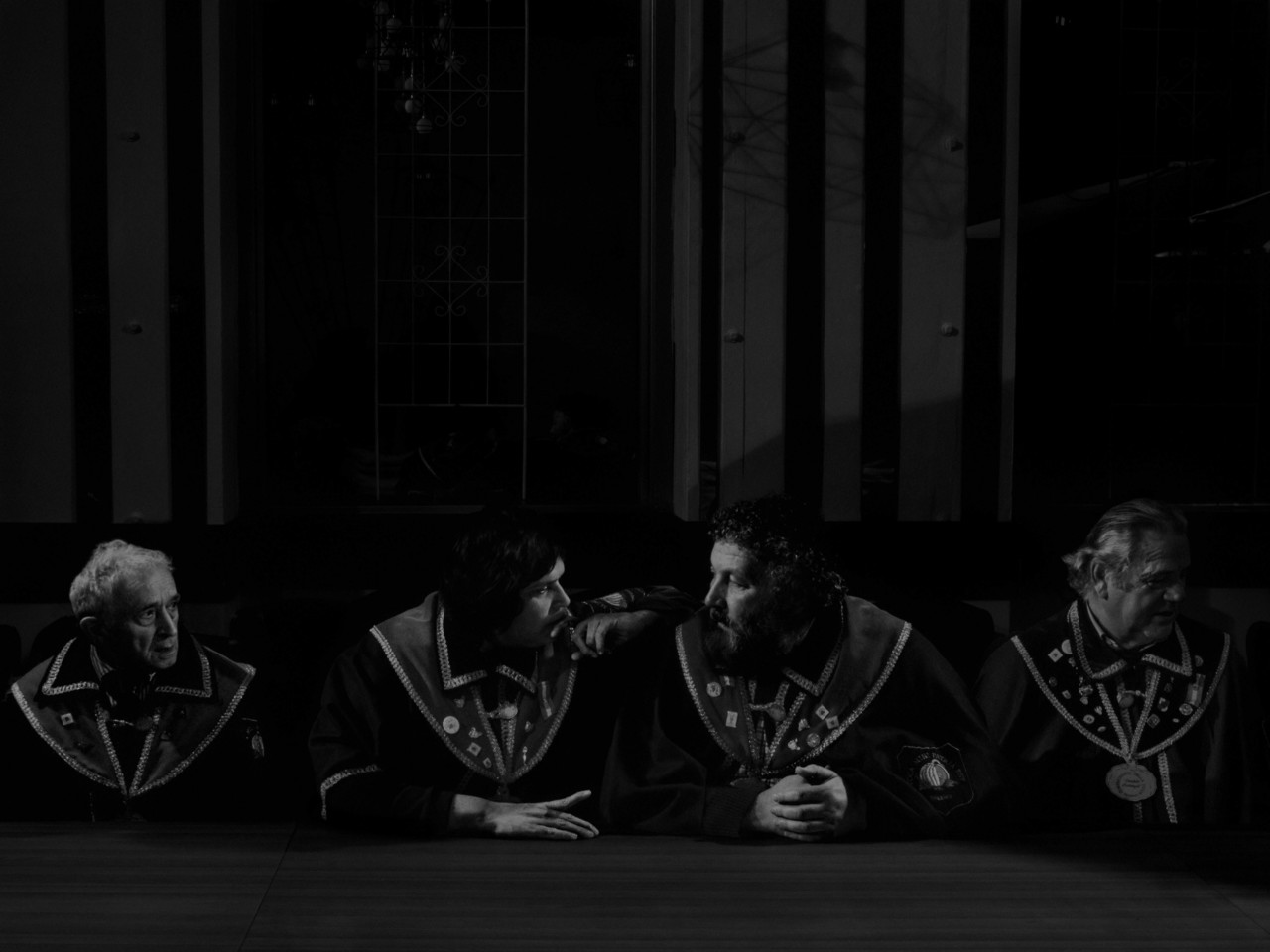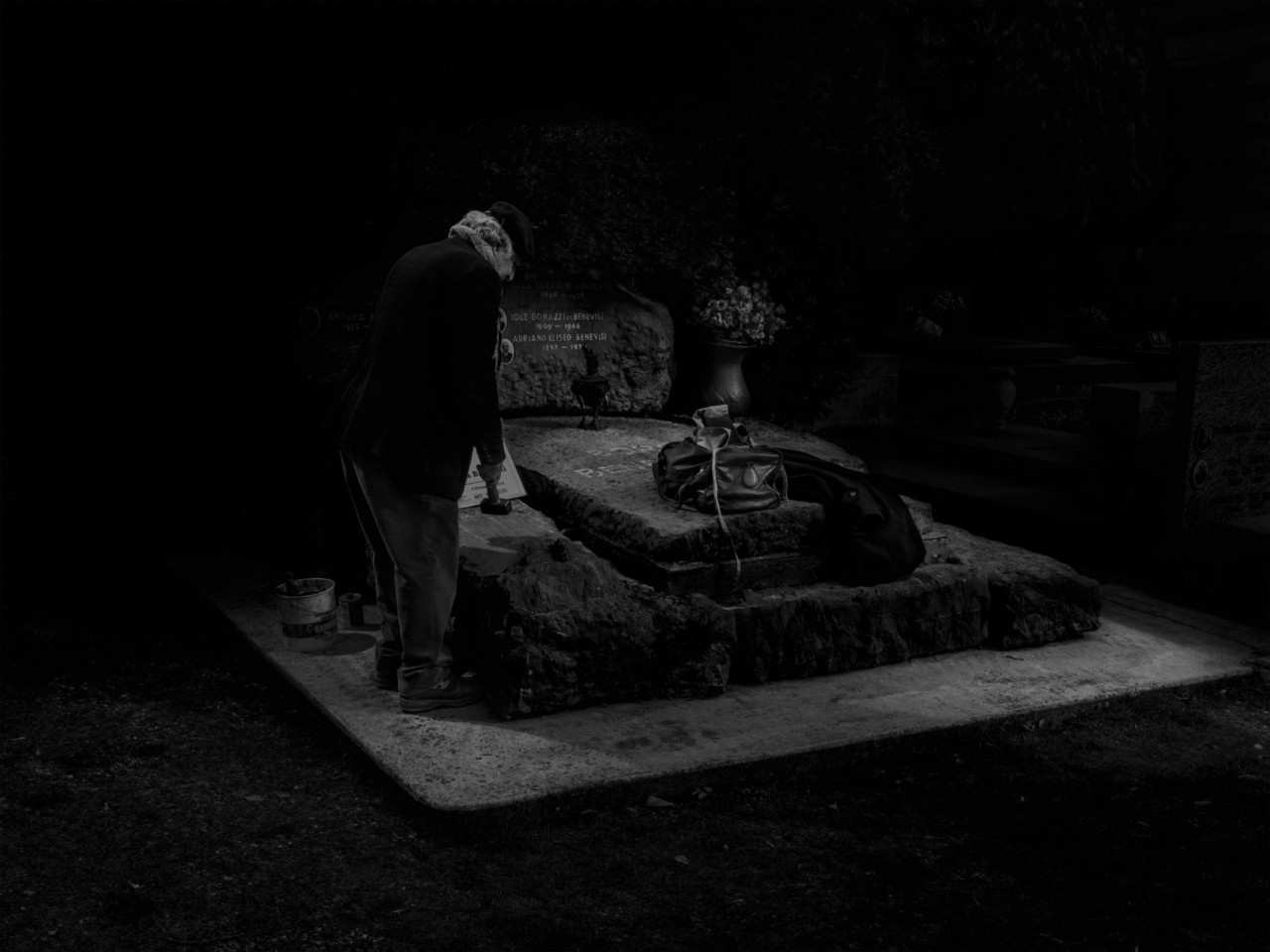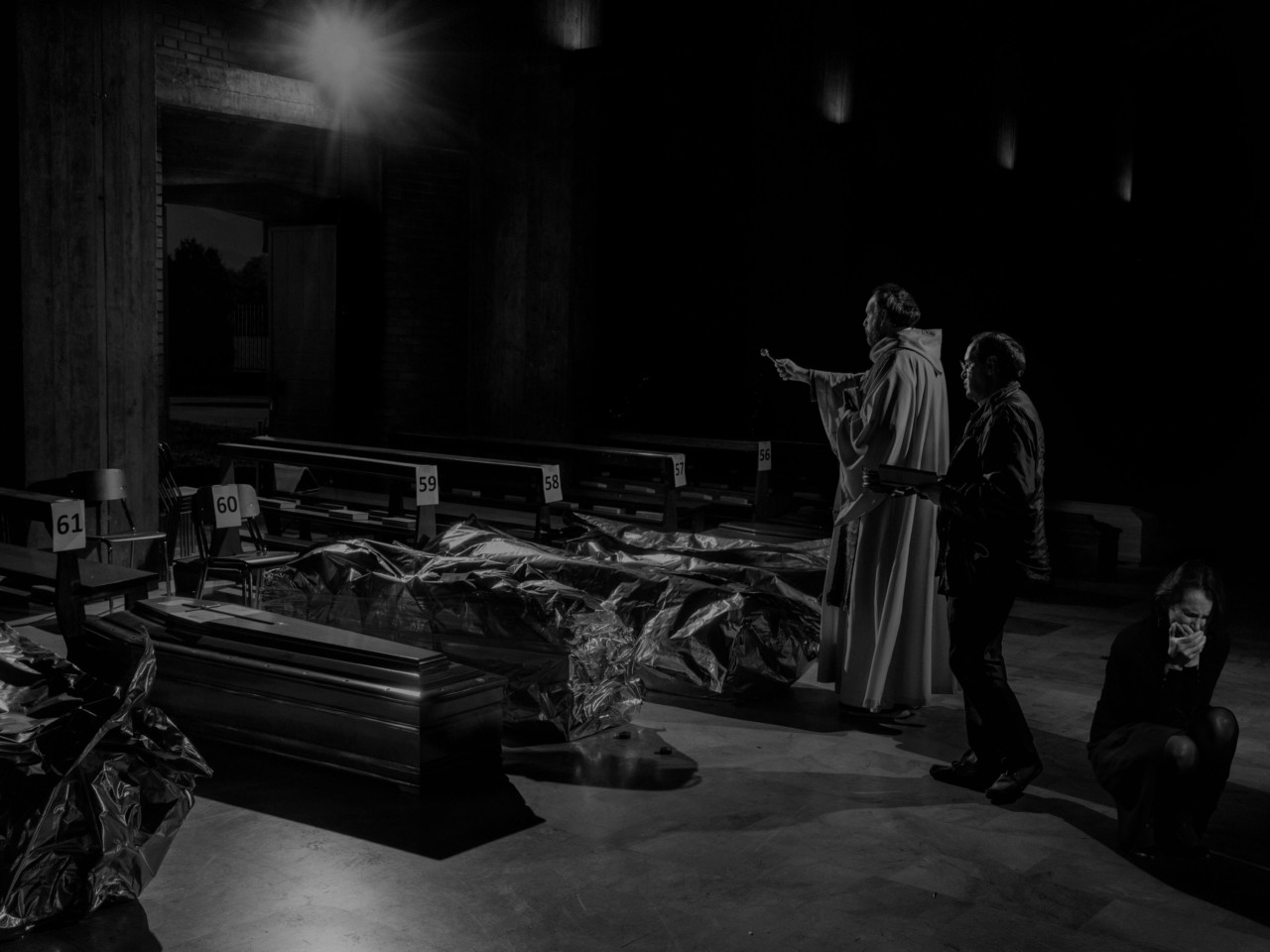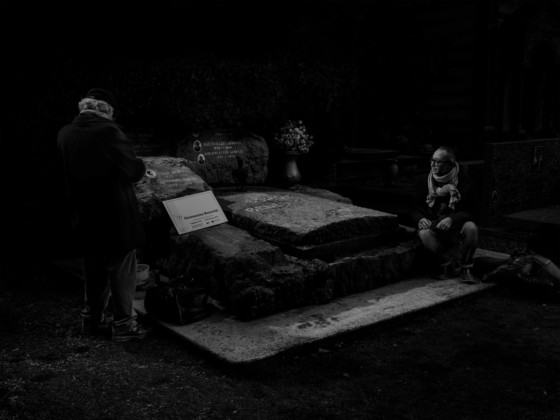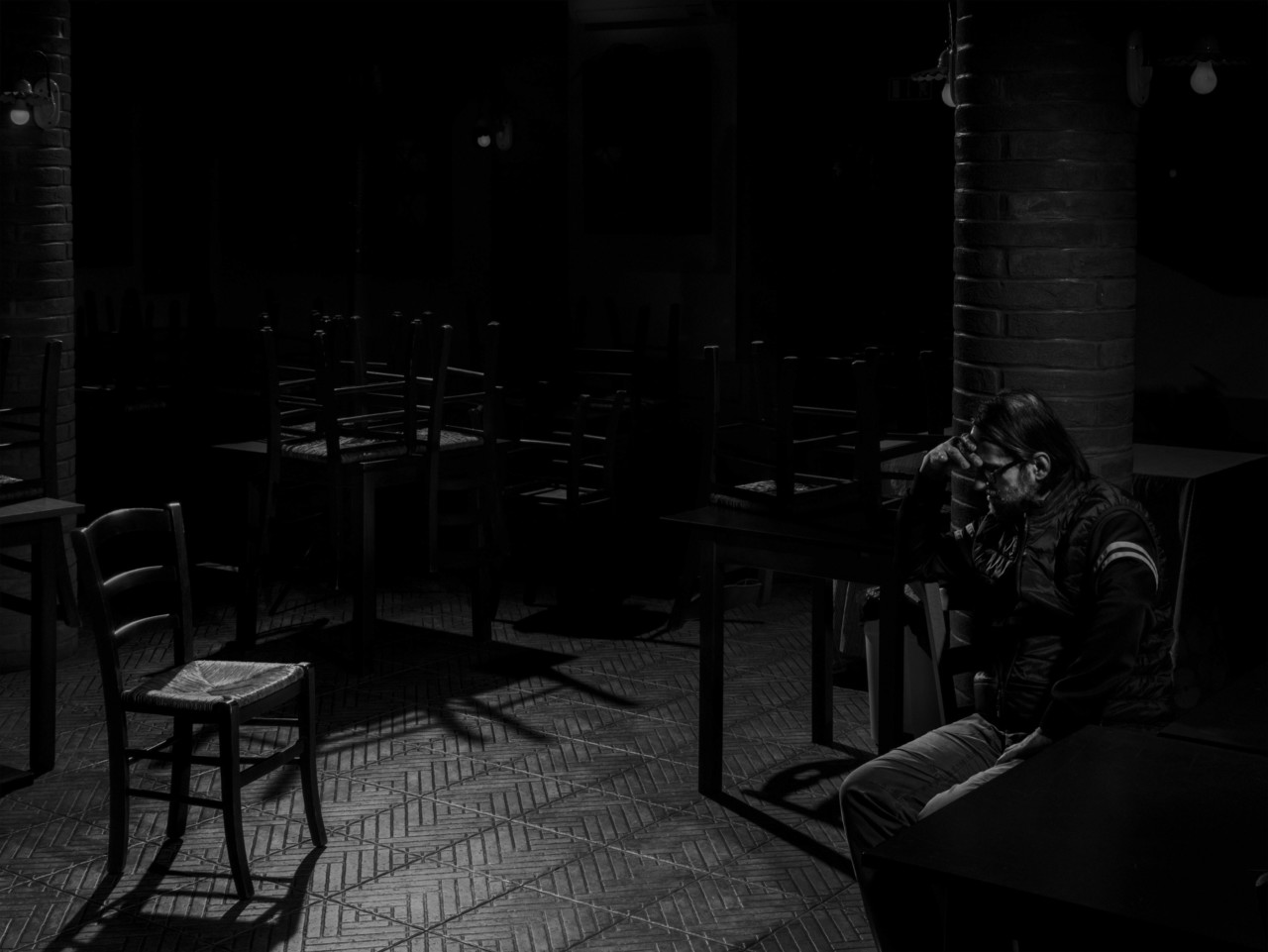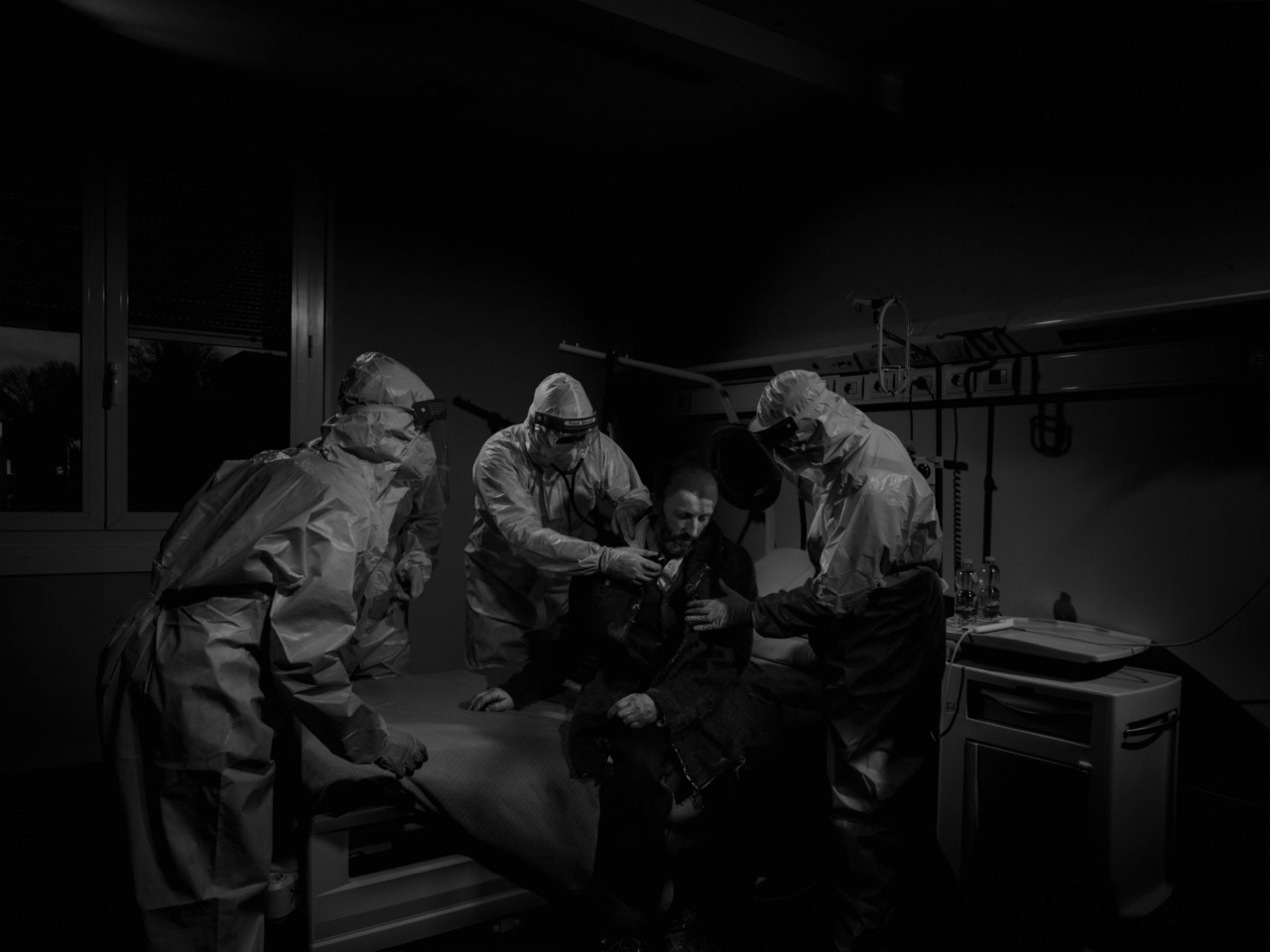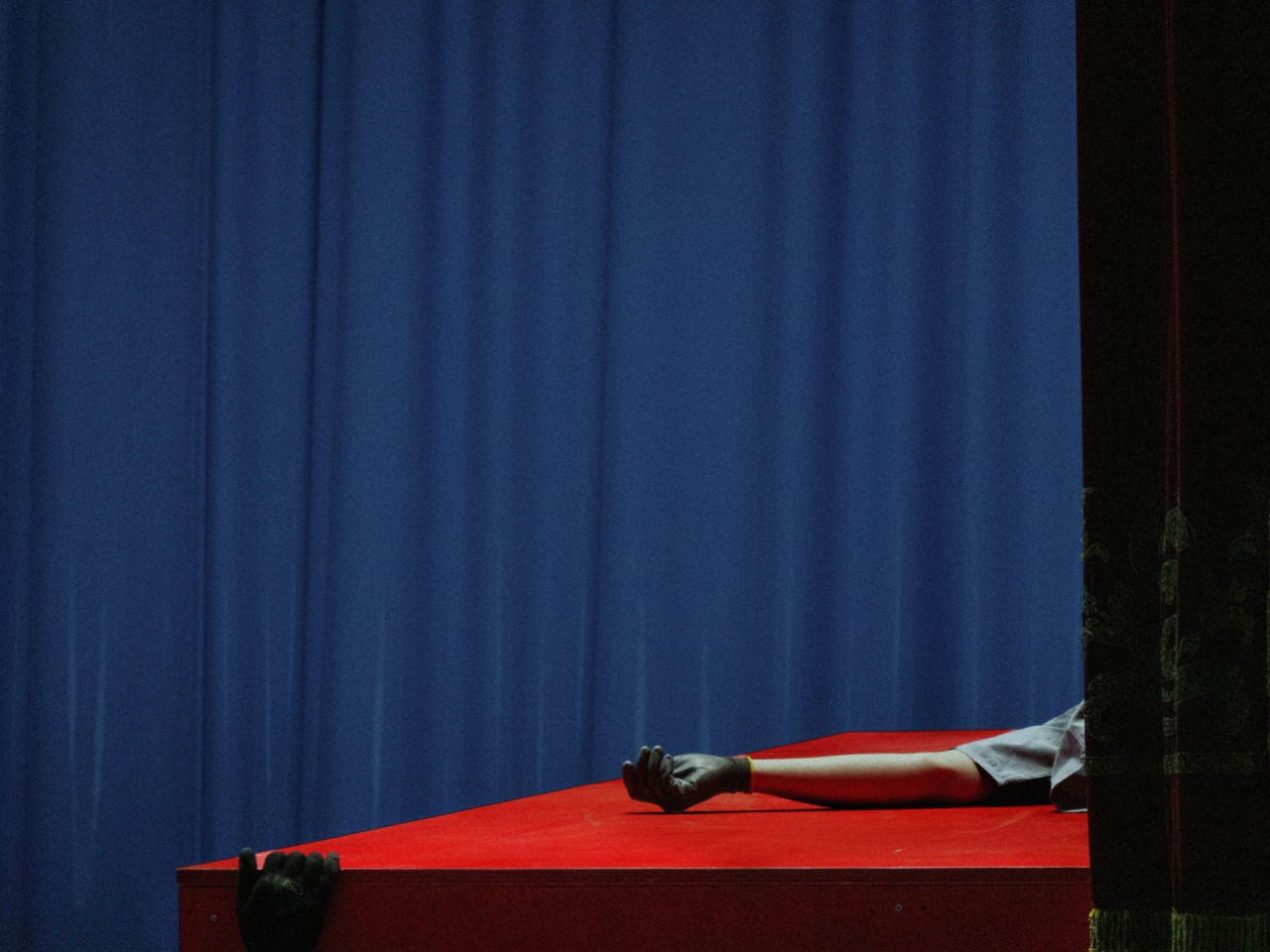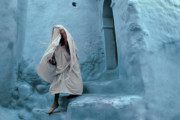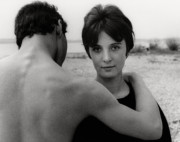Opera Aperta
Alex Majoli’s new publication is a dramaturgical study of life pre- and post-Covid
Former Global Cultural Director of Magnum Photos — now photography and art consultant — Sophie Wright speaks to Alex Majoli about his latest book.
You can purchase a copy of Opera Aperta on the Magnum Shop here.
“In the search for the truth we should experiment whenever possible.”
What does ‘truth” in photography mean in this time of digital disruption, fake news and the reassessment of representation and authorship? Many of Magnum’s current generation of photographers are expanding their methods of telling stories to address the multifarious challenges to the photographic image. For Alex Majoli, the evolution from his photojournalistic origins has led to an eight-year long exploration of the theatricality of life.
Opera Aperta represents the most radical chapter yet in this investigation. Commissioned by the Fondazione I Teatri in Reggio Emilia, it incorporates multiple ideas about performance and the pandemic in a purposefully open and unresolved narrative.
“Part of my DNA is that of a photojournalist, which has always been contradicted in my career. But even when I was photographing ‘real’ events, I was photographing a performance,” says Majoli.
The concept of the “theater of war” was a point of departure for the photographer as far back as 2004, when he was part of a group of Magnum photographers who together produced the exhibition ‘Off Broadway’. Masked up and talking with me from the printers in Italy where his book is being published, Majoli recounts discussions with his peers on picture editing taking place at media platforms during that period. In particular, he cites an acknowledgement of editorial departments’ tendencies to use shorthand signifiers of drama by choosing images incorporating expressive body language and strong facial emotions.
In his project ‘Scene’, Majoli explored this by developing a methodology that combines his well-honed instincts for picture making in complex real-life scenarios, with artificial lighting deftly inserted on location. Captured in chiaroscuro, reality is distilled in his images in intense black and white tableau. The project was presented in 2019 in a book with Michael Mack and an exhibition at Le Bal curated by David Campany. This led to the ‘Opera Aperta’ commission, initiated pre-Covid as part of the programme of the Fotografia Europa Festival and finished over the past year.
“The idea was to try to keep exploring this concept of acting and real life, and after I arrive with lights and see how people react in the scene… to try to add an actor into some of the situations, to play further with reality.”
Working with a carte-blanche brief and two actors, Majoli began by bringing them into the city and instructing them to improvise in found scenarios that he then photographed. But then Covid disrupted the project: the theater closed amidst the general country-wide lockdown and Majoli returned to his ‘Scene’ project, photographing the spread of the pandemic in Italy.
A year later, the theater was rehearsing ‘The Barber of Seville’ for streaming online and Majoli agreed to do some still life during the production. He worked with a lot of restrictions: “We were in the red zone at the time, so the work was difficult.” However, he managed to capture the opera singers with masks and gloves. “That was weird to see – an opera with all the actors in protective gear,” he says. As lockdown was eased, Majoli went on to explore a number of scenarios using his original actors as co-protagonists in the images.
The title, Opera Aperta, neatly refers to the opera troupe pictured in Majoli’s work, but originates with a book of essays by Umberto Eco, published in 1962. Eco was famous as a critical theorist before he became one of Italy’s bestselling authors. The phrase translates as ‘Open Work’. In the book, Eco argues for an open-ended approach to storytelling. In his opinion, less structure and more ambiguity offer a better reflection of contemporary lived experience. This is mirrored in the non-linear structure of Majoli’s experimental journey.
Majoli’s commission will be presented as large-scale wallpapers around the city walls of Reggio Emilia from May to July this year, in what the festival describes as “an osmotic exchange between theater and reality”. However, the primary form for this odyssey is the artist’s book.
“I was photographing Opera, and the idea of the book is that it is all unbound and open.”
Continuing with the theatrical theme, Majoli has structured this work into self-contained Acts. Three are shot like ‘Scene’, in black and white, and one is in color. In addition, he includes excerpts from a number of texts in Italian and English, which focus on the two themes of plague and performance. His intention is made clear by the inclusion of Antonin Artaud and Romeo Castelluci, amongst others, both avant-garde dramatists and theater directors known for pushing the boundaries.
In Act 1, made pre-Covid, Majoli seeks to “destabilize” the viewer’s sense of reality. Who is performing for the camera? In one of the pictures a man holds his head in his hands. He is a real restaurant owner, whose business was shutting down for Covid. Majoli explains: “When I asked him, ‘Can I take a portrait of you?’, he struck that pose. He made the picture of desperation”. This self-conscious performance of very real anxiety is juxtaposed with images including the same man with actors improvising for the camera, playing the role of a journalist. This eliding of fact and fiction goes beyond lighting to subject matter and represents a rupture with documentary.
Act 2 focuses on Covid. On top of photographs taken in Italy during the pandemic, Majoli has collaged the figure of an actress, whom he instructed to perform the anguish of the moment. For Majoli she serves to emphasize the drama of these real-life scenarios. Echoing earlier discussions about picture editing, her presence performs a similarly emotive role as that of real protagonists in an editorial narrative, chosen for their expressiveness and empathetic power. Aware of the ethical conundrum this intervention poses, Majoli presents the actress as a cut-out on a white background at the end of this booklet.
The Barber of Seville’s secondary title is “The Useless Precaution”. It’s an irony not lost on Majoli, who uses it for the title of the booklet incorporating the backstage work of the project. He includes it along with extracts of the lockdown rules disseminated by the Italian government. Through these interventions, Covid permissions and precautions and the play become intertwined. These are the only colour photographs in the project, which function to signal reality: “I wanted that part of the back-stage to not be confused with the rest of the work and become the only ‘real’ — or, journalistic — pictures of the book.”
Majoli says that he would have liked to have staged a play on Covid as part of this project, but governmental rules denied that possibility. Instead, he worked on re-enacting an image we have all become familiar with from the coverage of the pandemic: that of a patient in bed surrounding by doctors in white protective gear and suits. In Act 3 of the publication, he adds a surrealist twist: six actors take turns as the patient, while dressed up in full theatrical costume, and surrounded by doctors in protective gear.
Opera Aperta is an artistic endeavour. What is real and what is staged is intentionally elusive. This is not work for the Magnum archive, but Majoli doesn’t see it as at odds with its legacy. “I think both sides of the coin can link together… Magnum photographers have always worked in the context of the time they lived in”. This is a time of existential uncertainty and rapid change, in which truth often seems to depend on individual points of view. In Opera Aperta, Majoli doesn’t just frame the action, but controls it, turning from documentarist to director.


